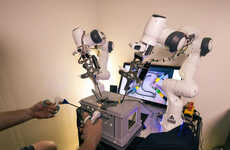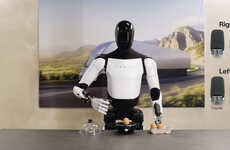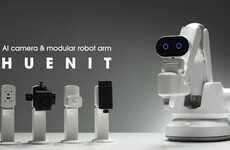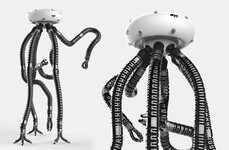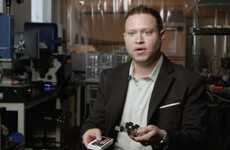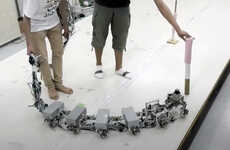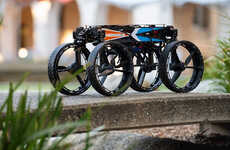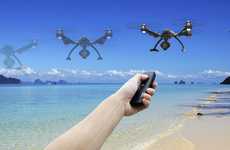
These Robots Shun Human-Like Appearance For More Efficiency
Rahul Kalvapalle — October 2, 2015 — Tech
A group of forward-looking scientists and researchers at Carnegie Mellon University have developed highly innovative tri-fingered robotic hands that open up new possibilities in the field of robotics. These robotic hands are equipped with a number of fully built-in optical detectors that function as adjunct sensors.
What's interesting about this innovation is that it marks a significant departure from classic robotic design, in that robots are usually anthropomorphized by being given hands, fingers, feet, toes, eyes in their heads and so on. But just because this is how humans look doesn't necessarily mean it's the best design for robots.
With this simple but very meaningful change in the design of the robotic hands, the scientists have managed to open up whole new possibilities for the functioning and applications of robots.
What's interesting about this innovation is that it marks a significant departure from classic robotic design, in that robots are usually anthropomorphized by being given hands, fingers, feet, toes, eyes in their heads and so on. But just because this is how humans look doesn't necessarily mean it's the best design for robots.
With this simple but very meaningful change in the design of the robotic hands, the scientists have managed to open up whole new possibilities for the functioning and applications of robots.
Trend Themes
1. Efficient Robotic Hands - The use of tri-fingered robotic hands with optical detectors creates new opportunities for efficient and precise robotic functions.
2. Non-anthropomorphic Robots - Designing robots without human-like features offers new potential for innovative robotic designs and capabilities.
3. Sensor-enabled Robotics - Incorporating sensors as integral parts of robotic systems provides opportunities for enhanced sensory capabilities and expanded functionality.
Industry Implications
1. Manufacturing - Implementing efficient robotic hands with sensor capabilities could greatly enhance manufacturing processes and improve productivity.
2. Logistics - Non-anthropomorphic robots with advanced sensory capabilities could revolutionize logistics operations with their ability to navigate various environments and carry out tasks with greater precision.
3. Healthcare - Sensor-enabled robotics with non-human features may offer innovative solutions for healthcare applications such as surgical procedures and assistive devices for the elderly or those with disabilities.
2.3
Score
Popularity
Activity
Freshness


